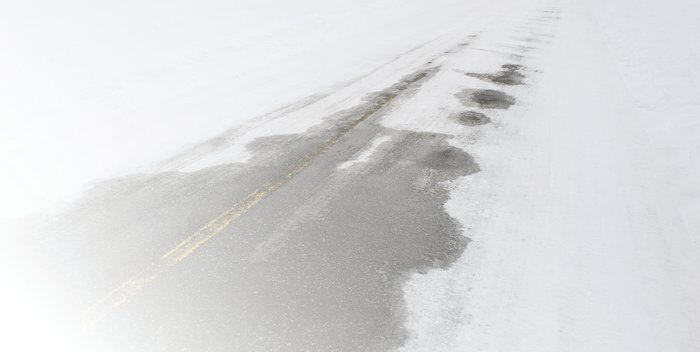It is always important for commercial fleet tire programs to have a plan in place when the winter season kicks into full gear. Tires with full tread can make a significant contribution to vehicle traction especially in that slushy snow and ice mix. Tires must be thoroughly inspected during the last preventative maintenance prior to the bad weather. Here is what should be on the to-do list for inspecting tires prior to winter:
- Measuring tread depths: Take tread depth measurements 180º apart in the major tire grooves across the tread. The Department of Transportation (DOT) minimum tread depth is 4/32 in. for steer tires and 2/32 in. for the drive, trailer and dolly wheel positions. If the tire is wearing smoothly and evenly, these tread depth measurements should be consistent across the tread and around the tire. Tread depth readings more than 2/32 in. from groove to groove indicates some sort of irregular wear (i.e. cupping, depressed ribs, heel-toe wear, fast shoulder wear), which can be due to underinflation, overloads and misalignment. For tire with stone ejectors at the bottom of the grooves, never take tread depth measurements on top of these stone ejectors. Measurements must be made between or next to a stone ejector for an accurate reading.
- Tire casing age: Most fleets have recommended specifications based on historical data related to tire casing age. It may be six years or even 10 years based on durability of the casing in a specific service vocation. The last four digits of the DOT code will identify the November and year the casing was produced. Every time the tire was retreaded, there will also be the retread DOT date code branded onto the tire sidewall. So it is easy to determine how many retreads per casing and the casing age.
- Tread and sidewall visual inspection: Running your hand over both the tread and sidewall is an easy way to identify nail punctures, damages, sidewall cracking and vehicle alignment related issues.
- Tire pressure measurements: Tires are designed to run at a specific cold tire pressure based on the specific load. Many fleets have different pressure specifications for steer, drive, or trailer position tires. Running tires underinflated can lead to early tire removals, reduced fuel economy due to early onset of uneven wear and sidewall flexing, reduced retreadability because of excessive heat, and tire related roadside service calls. Dual tires should always be within 5 PSI to keep the tire revolutions per mile consistent. Always use a calibrated pressure gauge when taking tire pressure readings.
- Tire rotation: Steer tires running in the 6-8/32 in. tread depth range can be run out on the trailer position to achieve 30,000 to 50,000 additional miles and more depending the specific service vocation. Some fleets have vehicles that turn frequently in city applications like pickup and delivery and they rotate their drive tires between axles. The rear axle tires are vulnerable to scrub. The rubber wears off quite rapidly in turning and there can be up to a 50% difference in treadwear between tires running on the front and rear drive axles.
An easy check to determine if a tire program is meeting expectations is to review scrap tires on a regular basis. There is a wealth of information that can be learned from doing a comprehensive scrap tire analysis. If a high percentage of new tires—with plenty of tread rubber remaining —end up in the scrap tire pile, make sure to find out why they are there.
Failure may be attributed to sidewall impacts when hitting curbs. This is an educational issue with the drivers and may simply require a driver incentive program to significantly reduce tire damage due to curb impacts.
If your fleet is targeting two retreads per casing, and the scrap tire pile is primarily the second retread with 75% or more tread still remaining, this might suggest a service application with one retread or casing as the better solution.
When it comes to scrap tire analysis, the bottom line is this: confirm that tires are being worn smoothly and evenly, down to the target removal tread depth. If two retreads are your fleet’s goal, and there are a large number of new tires and first retreads, then it is time to revisit your tire program.














